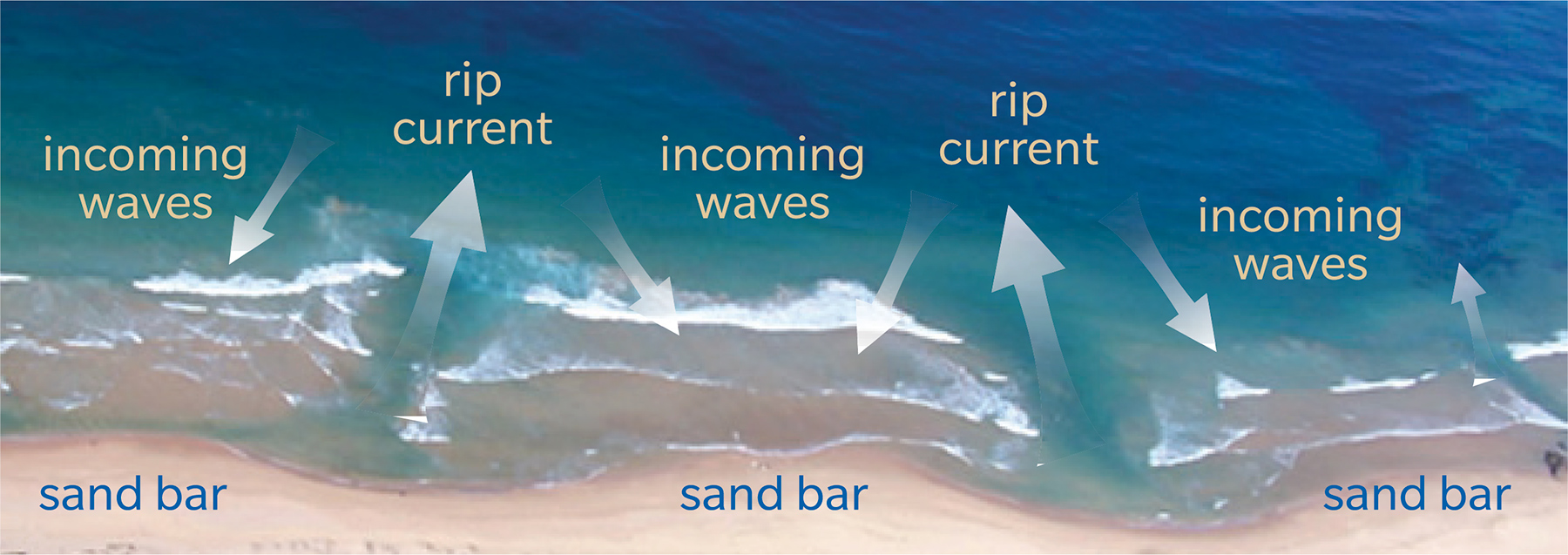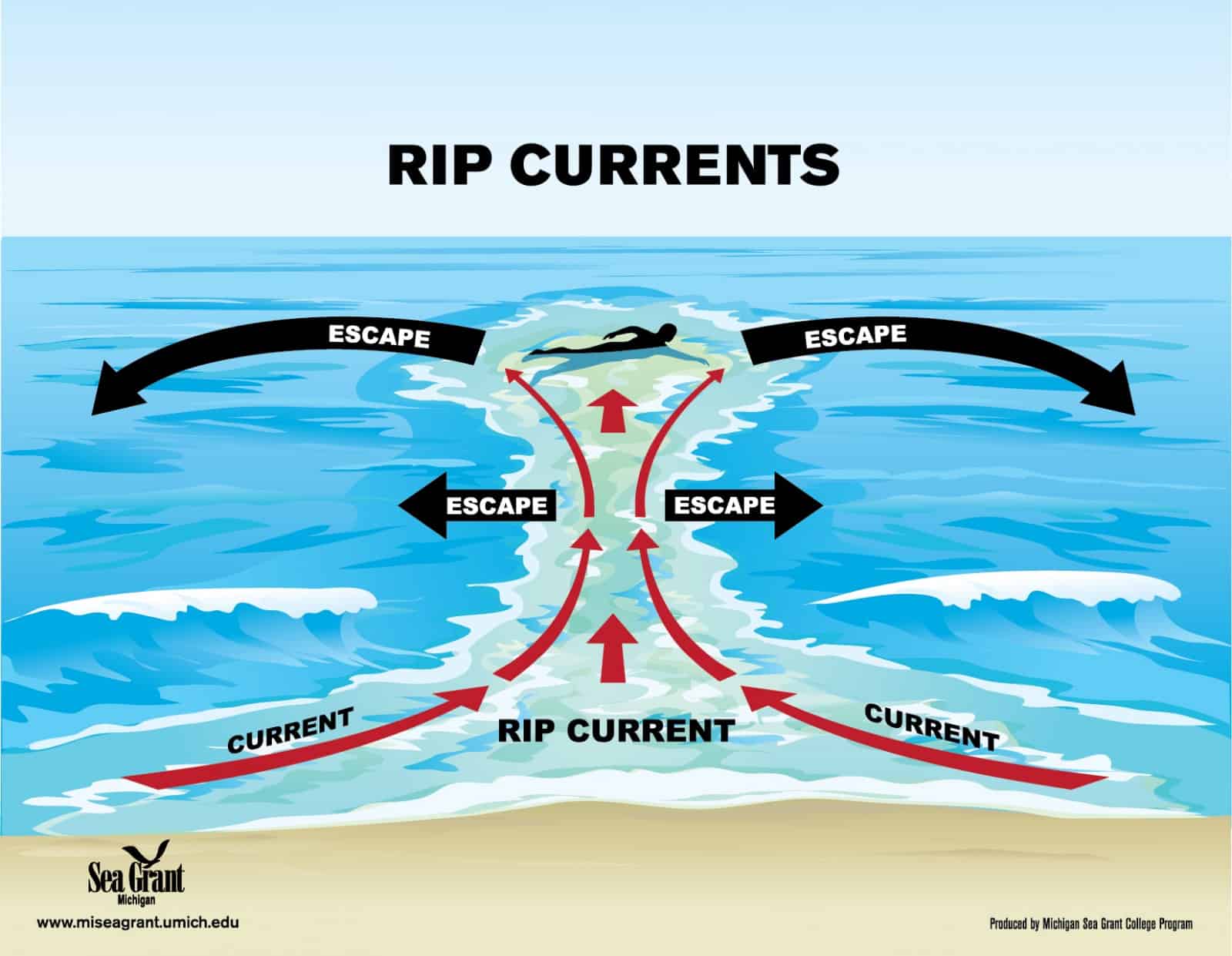Define Rip Current
What is a rip current – A rip current is a strong, narrow current of water that flows away from the shore, often through a break in the sandbar. Rip currents can be dangerous, as they can quickly pull swimmers away from the beach and out to sea.
A rip current is a powerful, narrow current of water that flows away from the shore, often through a break in the sandbar. These currents can be dangerous, as they can quickly pull swimmers out to sea. If you find yourself caught in a rip current, stay calm and swim parallel to the shore until you can escape the current’s pull.
As the dodgers rockies game continues, remember that rip currents can occur anywhere there is a break in the sandbar, so be aware of your surroundings when swimming in the ocean.
Rip currents are typically characterized by the following features:
- A break in the sandbar
- A choppy, turbulent surface
- A fast-moving current
- A cold-water area
Dangers Associated with Rip Currents
Rip currents can be dangerous, as they can quickly pull swimmers away from the beach and out to sea. Swimmers who are caught in a rip current may be at risk of drowning. The following are some of the dangers associated with rip currents:
- Swimmers can be pulled away from the beach and out to sea
- Swimmers can be held underwater by the current
- Swimmers can be exhausted by trying to swim against the current
- Swimmers can be injured by being thrown against the sandbar
How Rip Currents Form
Rip currents are formed when waves break on the sandbar and the water flows back down the beach. The water that flows back down the beach is often concentrated in a narrow channel, which creates a rip current. Rip currents can also be formed by the interaction of waves with underwater currents.
A rip current is a narrow, powerful current of water that flows away from the shore, often through a break in the sandbar. They can be difficult to spot, and can quickly pull even strong swimmers out to sea. What happened in Panama City Beach yesterday?
is a reminder of the dangers of rip currents, and how important it is to be aware of them when swimming in the ocean. Rip currents can occur anywhere there is a break in the sandbar, and they can be especially dangerous during high tide or when there are large waves.
Identify Rip Current Hazards

Rip currents are powerful, narrow channels of fast-moving water that can pull swimmers away from the shore. They can occur at any beach, but they are most common at beaches with breaking waves. Rip currents are caused by a combination of factors, including the shape of the beach, the strength of the waves, and the tide.
Rip currents can be very dangerous, and they can quickly pull even strong swimmers away from the shore. It is important to be aware of the signs of a rip current and to know what to do if you are caught in one.
Physical and Environmental Factors Contributing to Rip Current Formation
The physical and environmental factors that contribute to rip current formation include:
- The shape of the beach: Rip currents are most common at beaches with a steep slope and a narrow surf zone. This is because the waves break further out from the shore, and the water that is pushed back towards the shore by the waves can create a rip current.
- The strength of the waves: Rip currents are also more common at beaches with strong waves. This is because the stronger the waves, the more water is pushed back towards the shore, and the greater the potential for a rip current to form.
- The tide: Rip currents are most common at low tide. This is because the water is shallower at low tide, and the waves break closer to the shore. This can create a stronger rip current.
Common Locations Where Rip Currents Occur, What is a rip current
Rip currents can occur at any beach, but they are most common at beaches with breaking waves. They are also more common at beaches with a steep slope and a narrow surf zone.
Rip currents can occur anywhere along the beach, but they are most common near jetties, piers, and other structures that can disrupt the flow of water.
Signs of a Rip Current
The signs of a rip current include:
- A break in the line of waves
- A choppy, turbulent area of water
- A channel of water that is moving faster than the surrounding water
- A change in the color of the water
If you see any of these signs, it is important to stay out of the water.
Safety Measures and Survival Techniques: What Is A Rip Current

If caught in a rip current, remaining calm is paramount. Avoid swimming directly back to shore, as this can lead to exhaustion. Instead, swim parallel to the shoreline until free from the current’s grip.
Escape Techniques
- Swim parallel to the shore: Do not attempt to swim directly back to shore, as this can be exhausting and futile. Instead, swim sideways along the shoreline until out of the rip current’s reach.
- Float or tread water: If unable to swim, float or tread water while signaling for help. Conserve energy by avoiding unnecessary movements.
- Use flotation devices: If available, use flotation devices such as life jackets or inflatable tubes to stay afloat and conserve energy.
Role of Lifeguards and Safety Measures
Lifeguards play a crucial role in preventing rip current incidents by monitoring beaches and warning swimmers of potential hazards. They can also provide assistance to those caught in rip currents. Other safety measures include:
- Educating beachgoers about rip currents and their dangers
- Posting warning signs at beaches prone to rip currents
- Installing lifeguard towers and rescue equipment
A rip current is a powerful, narrow current of water that flows away from the shore, often through a break in the sandbar. It can move at speeds of up to 8 feet per second and can carry even strong swimmers out to sea.
If you find yourself caught in a rip current, don’t panic. Swim parallel to the shore until you reach calmer water. Dodger vs Angels is a great game to watch while you’re waiting for the rip current to subside.
A rip current is a narrow, powerful channel of fast-moving water that flows away from the shore, often through a break in the sandbar. While seemingly serene on the surface, rip currents can quickly carry unsuspecting swimmers out to sea.
To avoid their clutches, always swim parallel to the shore if caught in a rip current. For the latest royals vs athletics prediction , check out our website. Remember, rip currents can be unpredictable and dangerous, so it’s crucial to stay alert and aware of your surroundings when swimming in the ocean.
A rip current is a powerful, narrow current of water that flows away from the shore. It can be difficult to see and can quickly pull swimmers out to sea. If you are caught in a rip current, do not panic.
Stay calm and swim parallel to the shore until you are out of the current. For more information on rip currents and beach safety, check out the panama city beach flags today.